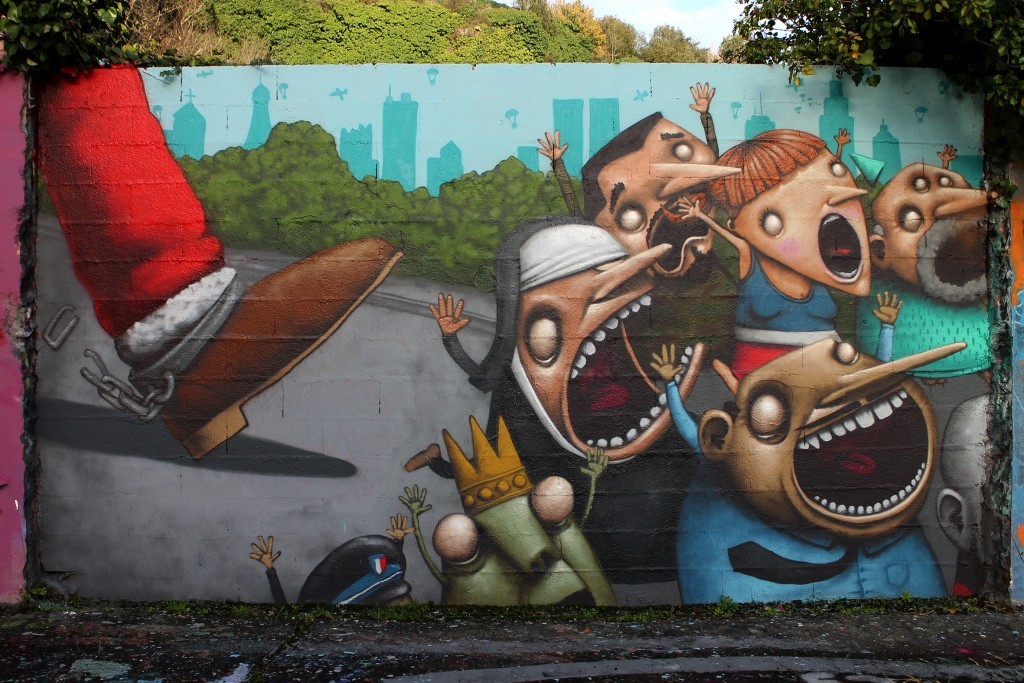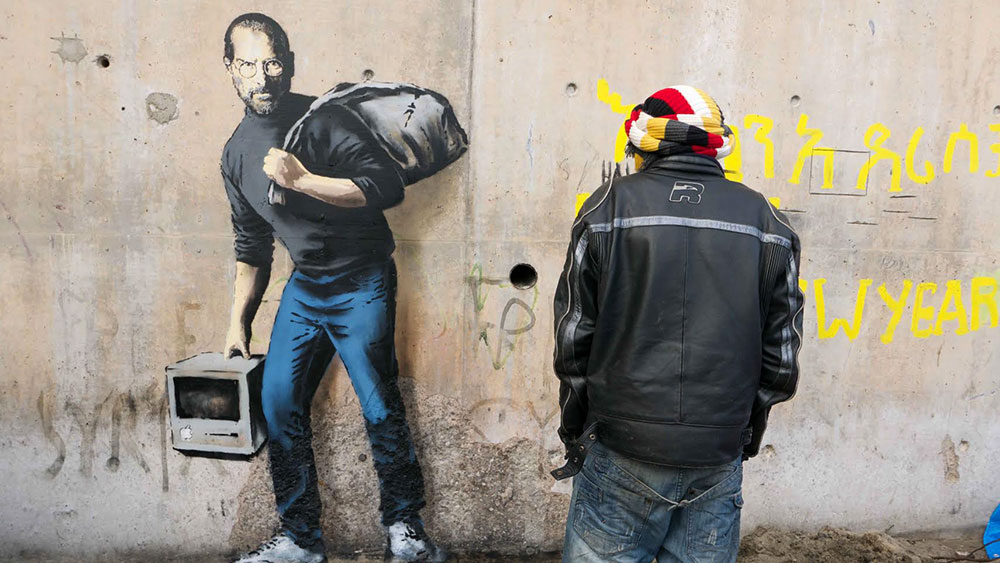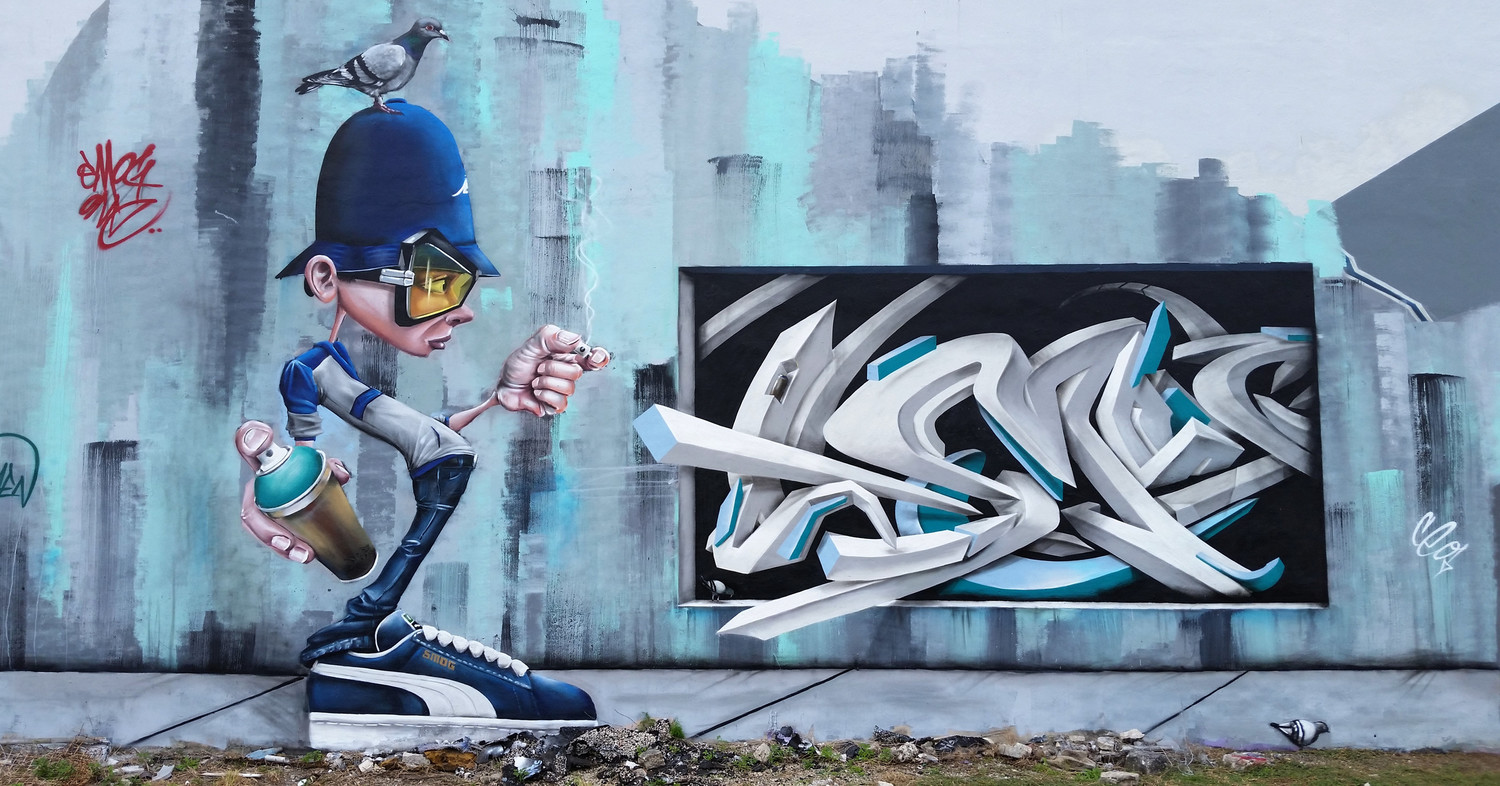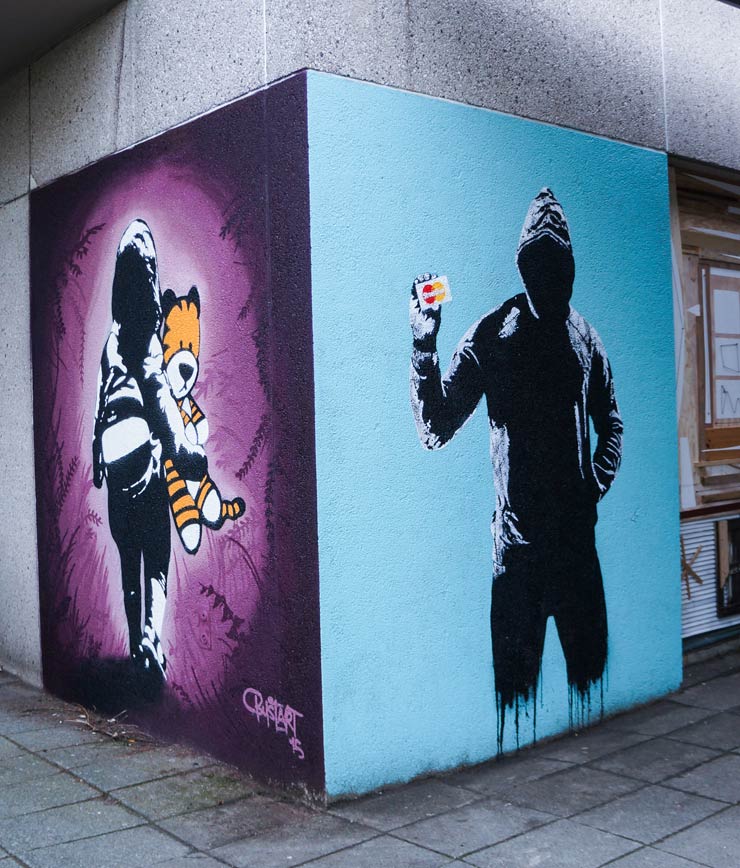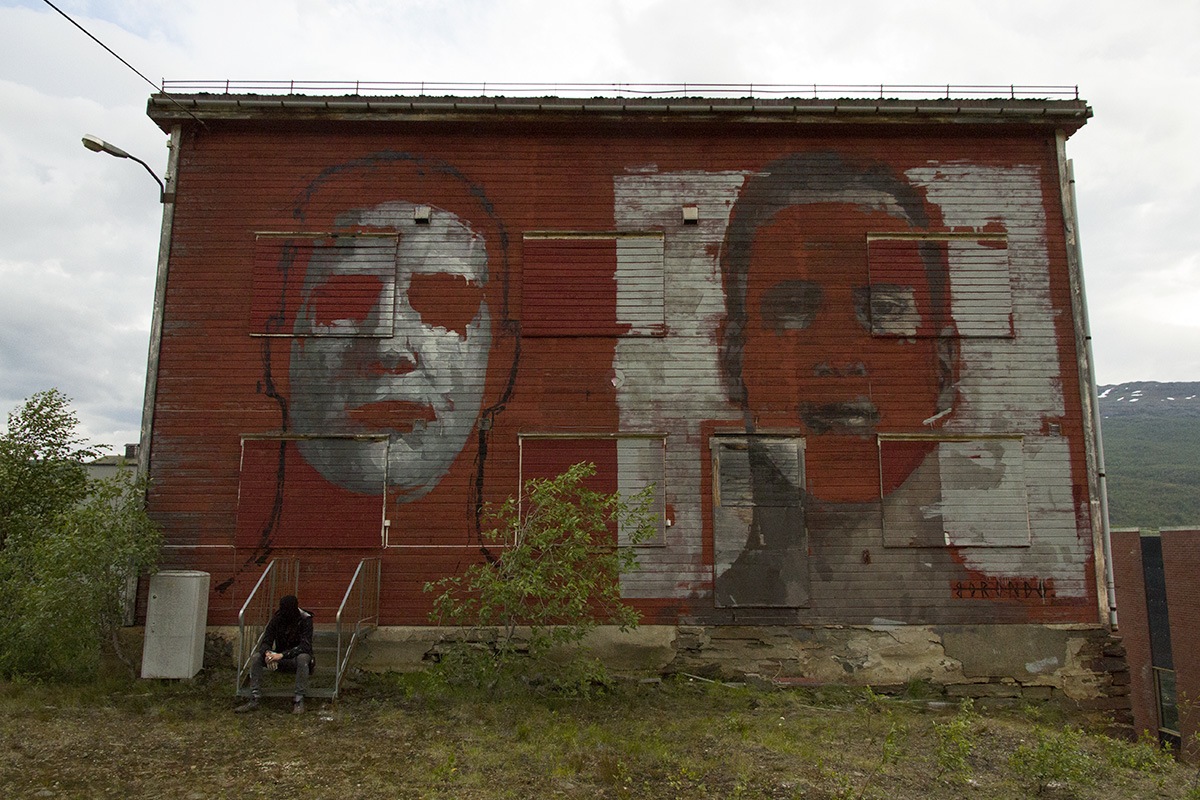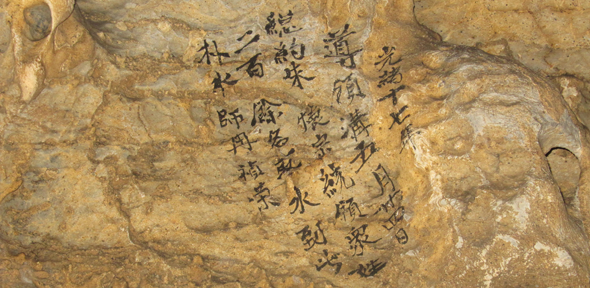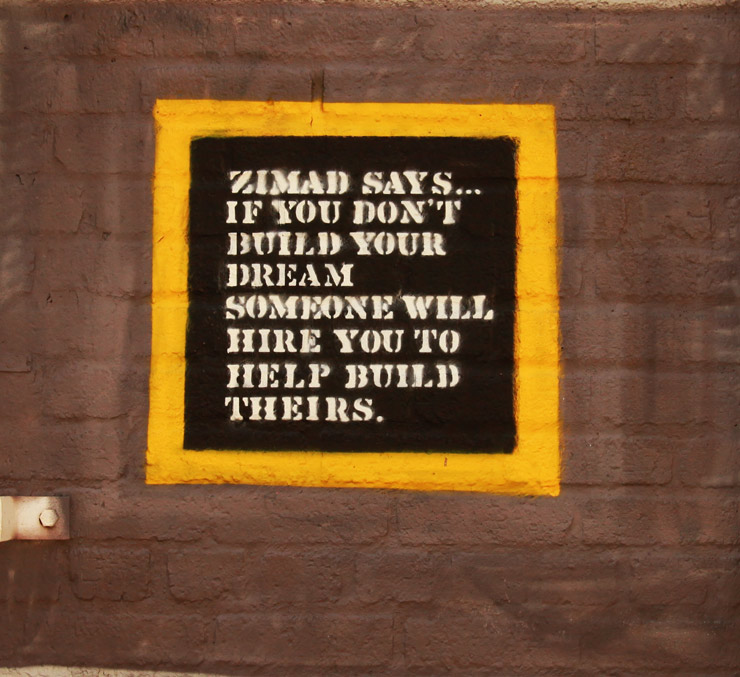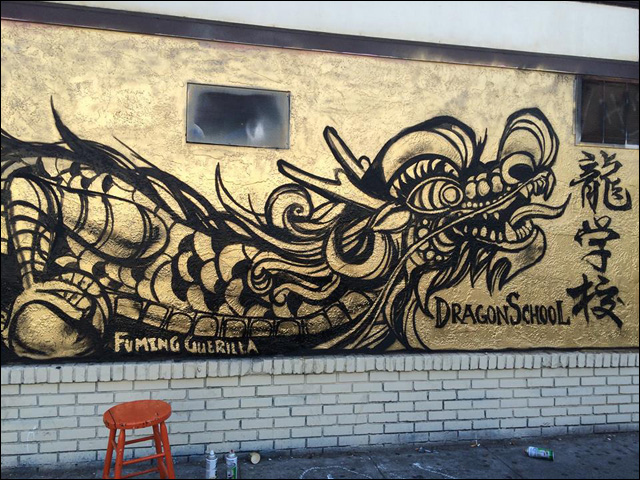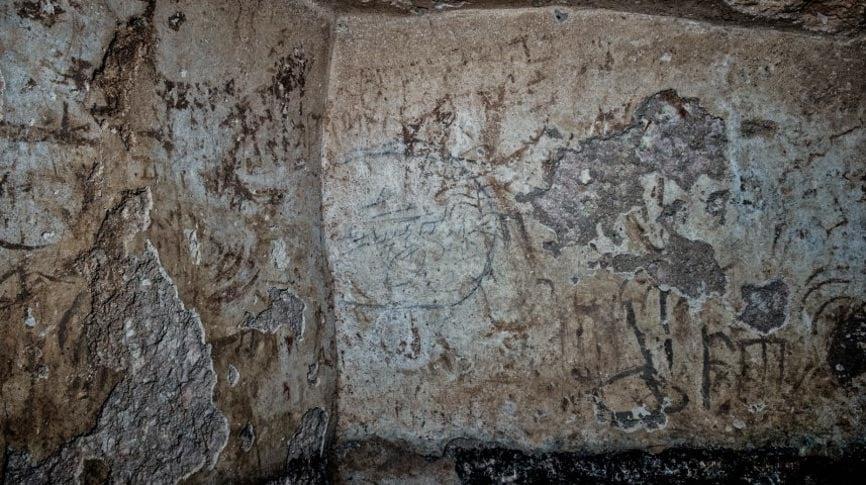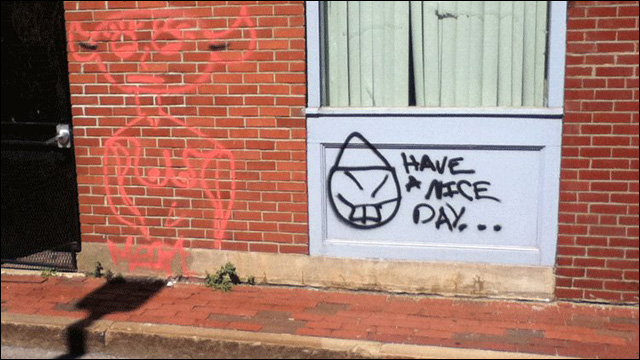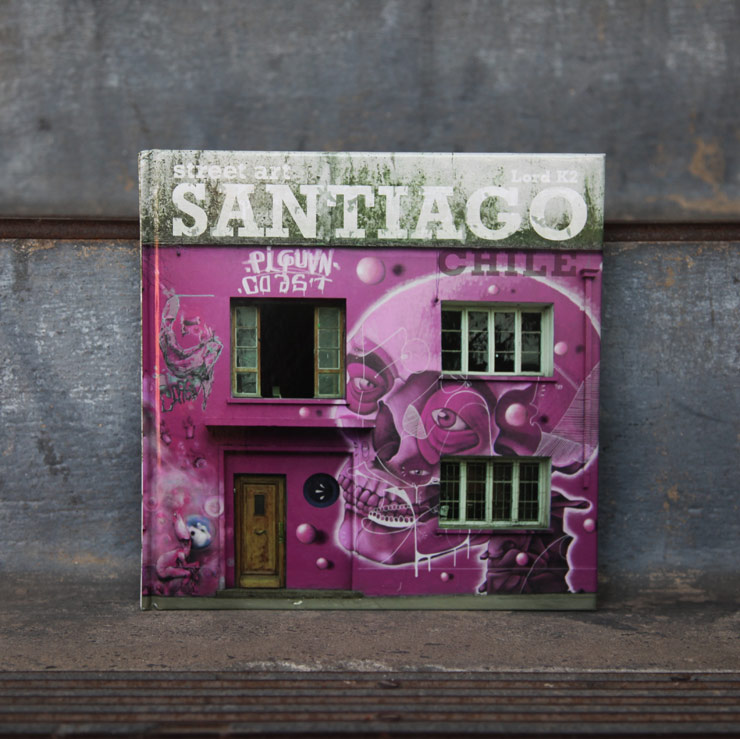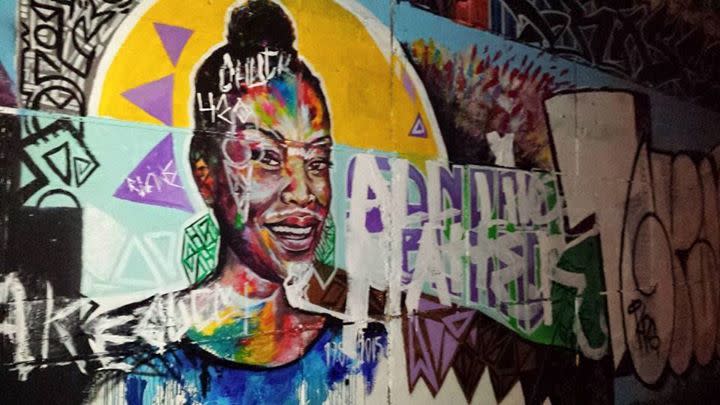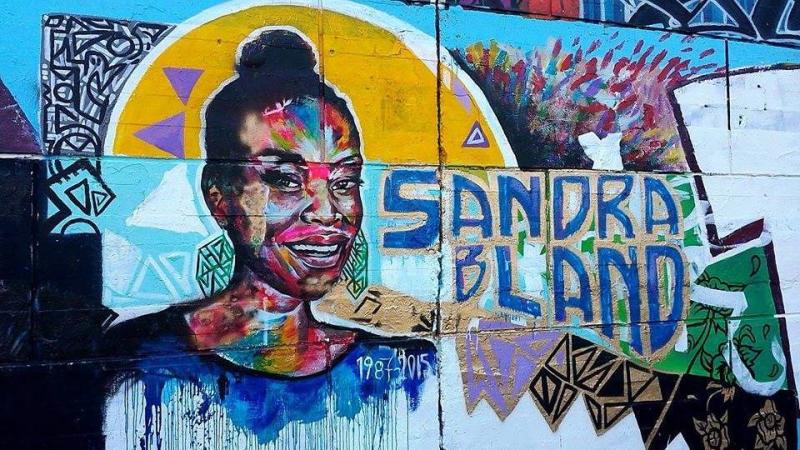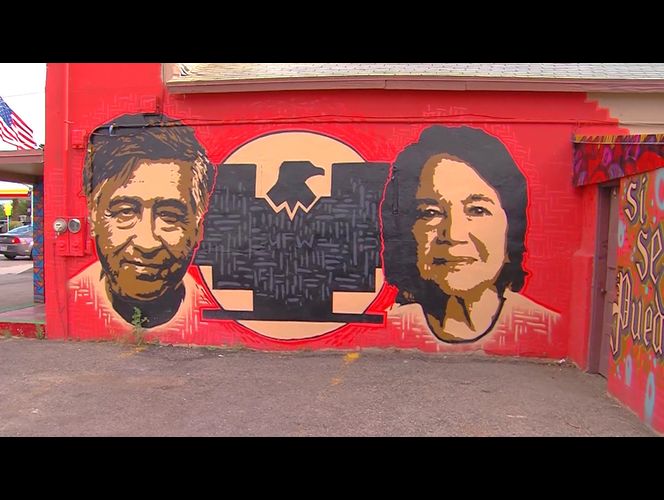Tuesday, December 29, 2015
Sunday, December 27, 2015
Friday, December 25, 2015
Wednesday, December 23, 2015
Sunday, December 20, 2015
Wednesday, December 16, 2015
Sunday, December 13, 2015
Saturday, December 12, 2015
Thursday, December 10, 2015
Red Bull BC One 2007: Lilou v. Roxrite
Where would you like to see BBoying go in the next 5 years?
For myself I would like to see BBoying stay raw in the underground like it has always been but also I would love to see more and more bboys/bgirls get to shine on a more visible level. I would like to see bboys and bgirls get more endorsements and more opportunity for them to survive off their craft.
Do you ever feel like the pillars of Hip-Hop don’t interact with each other as they used to? If so, how would you like to remedy that issue?
This is definitely true. It’s like each element forgot about one another and only those that truly understand that this is a culture and not just music see it for what it is supposed to be. Honestly, I don’t know if there is a remedy. I feel some elements are only based on hits and money, so they don’t keep up with one another. Bboys/bgirls, graffiti artist and some DJs are fans of one another. Once they reach mainstream success they don’t incorporate what Hip Hop is. They just push whatever the trend is. I guess the best way to change this is to start with education and teaching people what Hip Hop was, where we’re at, and where we can take it from here as a whole, not just one element.
read full interview here
Sunday, December 6, 2015
Chi-Raq
"It’s not a documentary, something the proud New York Knicks fan declared
combating premature opinions. Matter of fact, it doesn’t fit into any
genre. It’s the love child of a bold comedy meets drama who had an
affair with a musical. Call it a “tragicomedy,” the remixed adaptation
of Lysistrata, the 2,500 year old Greek satire by Aristophanes of one woman’s extraordinary mission to end the Peloponnesian War." source
Chicago Rappers aren't happy with it
Chicago Rappers aren't happy with it
Little Simz ft. The Hics - Gratitude
In South Africa
Thursday, December 3, 2015
Give it up for the DJ!
"the impact DJs have within the music industry and how
their recognition is overdue, especially in regards to the many
intricate roles that come with standing behind two turntables.
read rest here
“To see where the DJ is at now is remarkable,” DJ Kid Capri said at the event. “For so many years the DJ had the door shut in their face, so this is a celebration of sorts.”
From being the pulse of the party to helping dictate the
direction of popular music, some of the business’s most respected and
recognized DJs, music executives and historians are featured in the
film, including Kid Capri, Afrika Bambaataa, DJ Jazzy Jeff, DJ Jazzy Joyce, The World Famous Brucie B, DJ SNS and DJ Irie.
Conversations surrounding DJ culture, within Hip-Hop and
the multifaceted music industry, are ones that can continue for days on
end. Pridgen pieced together the documentary exceptionally, with many
diverse topics being explored within the 90-minute film.
“Music helps you do a lot of things,” says Jazzy Joyce.
“When you listen to a certain song, you remember certain things. The
first song we all learn is the ABC’s, so you tell me how important music
is.”
read rest here
Wednesday, December 2, 2015
In Paris before the COP21 Climate conference
"Two days before the launch of the UN COP21 Climate Conference, 600 posters were installed by the Brandalism
project in outdoor media spaces across Paris. 82 Artists from 19
different countries made artworks to challenge the corporate takeover of
COP21 and to reveal the connections between advertising, the promotion
of consumerism and climate change."
more here
more here
Kweli attacked in Copenhagen
"Me and @nikohigh
walking into Christiania Copenhagen last night. One of my favorite
places in the world until last night. I've been hearing about Danish
racism on the rise. I witnessed it firsthand. I was attacked by two
bigots last night saying they "hate me" and they didn't even know who I
was, they just didn't like the color of my skin. It wasn't an Internet
attack, it was physical. I was hit and kicked. Thank you to @nikohigh
for helping me get out of there. It goes to show you that racism and
hate doesn't stop for ppl with money or "celebrity" whatever that means.
They stop nothing tho. The show still went on, Copenhagen was a great
crowd. Even tho I will never see Christiania the same, a place I once
wrote about for a travel blog as utopian, I will always love my fans in
Denmark. Your love last night, especially while I was away from family
during holiday, only made me stronger."
source
source
Monday, November 30, 2015
M.I.A. - Borders
"M.I.A. expressed why the plight of the refugees is a personal topic for her. "I want to dedicate this video to my uncle Bala, my icon and role model," she wrote. "One of the first Tamil migrants to come to the U.K. in the 60s who went to inspire so many people as a creative, daring man with so much swag that everything I do doesn't even touch his sides. Thank you for helping my family come to England and taking us out of Sri Lanka and saving us. Everything I became was to say thank you to you!"
Friday, November 27, 2015
Thursday, November 26, 2015
Guardian interview with Immortal Technique
Felipe Andres Coronel, aka Immortal Technique,
is more than just an underground hip-hop legend – he's an activist,
humanitarian and a revolutionist. Born in Peru and raised in Harlem, New
York, the 34-year-old has struck a chord with those seeking an
alternative voice in hip-hop. He represents a thorn in the side of the
mainstream with his messages about class struggle, religion, government
and institutional racism.
Where does the anger in your music come from?
I think it's righteous fury. If someone shot your mother you'd be angry, right? But would you be wrong for being angry? No. I've heard people criticise me for the most ridiculous things, calling my music abrasive. If you're troubled by the words I speak, then you should probably hang yourself because the world is going to tear you apart or is too real for you to accept. I'm not offended by fuck, shit, pussy, dick, motherfucker. You know what I'm offended by? I'm offended by seeing a child in Gaza who has had his skin burned off by white phosphorus. I'm offended by seeing the graves of civilians that are there because they are the "collateral damage" of a drone strike in Afghanistan or Pakistan. I'm offended when I see people perverting Christianity, Islam or Judaism for their own political purposes so they can justify taking land or killing people in the name of something.
Your lyrics contain a lot of religious messages. What does religion mean to you and do you follow a faith?
If I told people I was a Muslim, people wouldn't say: "Wow, that's wonderful you've found inner peace in your life by embracing Islam." They'd ask: "What type of Muslim are you? Are you one of them fucking Wahabbi, Sunnite, Salafi psycho-niggas? Are you down with Hezbollah and them?" If I told people I was Jewish, they'd ask: "Do you support Israel and do you support the colonisation of Palestine?" It's irrelevant whether you call yourself a Christian, Muslim or Jew because if you don't reflect that in your life, you aren't that at all. I have always been hounded by people about it; people try and pry it out of me. I believe in God and have a faith that's very personal to me. That faith is between me and God. We have polarised religion, rather than it being a personal reflection of your relationship with God and how you communicate with God. I'd rather be friends with a good atheist than a bad religious person. Your religion is suppose to ennoble you, but if all it makes you do is become contemptuous of other people, or make you say other people are going to hell, your religion has failed you, or rather, you have failed your religion.
read the full interview here
Where does the anger in your music come from?
I think it's righteous fury. If someone shot your mother you'd be angry, right? But would you be wrong for being angry? No. I've heard people criticise me for the most ridiculous things, calling my music abrasive. If you're troubled by the words I speak, then you should probably hang yourself because the world is going to tear you apart or is too real for you to accept. I'm not offended by fuck, shit, pussy, dick, motherfucker. You know what I'm offended by? I'm offended by seeing a child in Gaza who has had his skin burned off by white phosphorus. I'm offended by seeing the graves of civilians that are there because they are the "collateral damage" of a drone strike in Afghanistan or Pakistan. I'm offended when I see people perverting Christianity, Islam or Judaism for their own political purposes so they can justify taking land or killing people in the name of something.
Your lyrics contain a lot of religious messages. What does religion mean to you and do you follow a faith?
If I told people I was a Muslim, people wouldn't say: "Wow, that's wonderful you've found inner peace in your life by embracing Islam." They'd ask: "What type of Muslim are you? Are you one of them fucking Wahabbi, Sunnite, Salafi psycho-niggas? Are you down with Hezbollah and them?" If I told people I was Jewish, they'd ask: "Do you support Israel and do you support the colonisation of Palestine?" It's irrelevant whether you call yourself a Christian, Muslim or Jew because if you don't reflect that in your life, you aren't that at all. I have always been hounded by people about it; people try and pry it out of me. I believe in God and have a faith that's very personal to me. That faith is between me and God. We have polarised religion, rather than it being a personal reflection of your relationship with God and how you communicate with God. I'd rather be friends with a good atheist than a bad religious person. Your religion is suppose to ennoble you, but if all it makes you do is become contemptuous of other people, or make you say other people are going to hell, your religion has failed you, or rather, you have failed your religion.
read the full interview here
Hip Hop and Capitalism
"Gangsta Rap burst forth in its nascent form in the late 1980's in the
heart of Los Angeles. To comprehend how this subgenre of rap developed,
however, the
ruthless conditions which originally produced the gang epidemic must be
recognized. Institutionalized racial segregation, economic deprivation,
and social
degradation, enforced by hegemonic government and business structures,
had historically plagued communities of color in the area and produced a
distinct
history which would give rise in the 1980's to a prodigious spike in
gang activity and violence. Historically marginalized groups would be
pitted against
one another in despondent economic conditions and forced to compete
amongst themselves for the paltry scraps that fell from society's table.
Government
departments, banking agencies, and the real estate industry would play
into the game of get-rich-quick racial segregation. Redlining, the
practice of
denying or increasing costs of housing and insurance to economically
segregate communities along racial lines, played a fundamental role in
the homogenous
racial composition of west coast urban areas. In 1938, the Federal
Housing Administration released an underwriting manual which all lenders
were forced to
read, explaining that areas should be investigated in order to
determine "the probability of the location being invaded" by
"incompatible racial and social
groups" and, more importantly, that for a "neighborhood is to retain
stability" it must "be occupied by the same social and racial classes"
because a
change in these would lead to "instability and a decline in values." [1] Some
entrepreneurs "figured out how to hustle racial fear" [2]
by buying at
low prices from whites fleeing their homes and selling to blacks at
prices significantly higher than market level. This effectively kept
blacks and whites
segregated into different neighborhoods."
read the rest here
read the rest here
Wednesday, November 25, 2015
Hip Hop and Resistance in Ferguson
"The critique of hip hop should not come as a surprise. While we are
used to it coming from right wing conservative factions and many times
while we understand that criticisms aimed at hip come from blacks
steeped in politics of respectability, these critiques came from within
the hip hop community itself. I argue that this in and of itself is not a
bad thing because in order to hold the community accountable for its
own actions or inactions, one must hold each other compassionate
accountability.
However, I also maintain that criticizing hip hop is also a default position for many of us in society–that to blame hip hop for action or in action, for good, bad, or anything in between; to blame hip hop for just existing at times, is the problem. It negates the need to further analyze and see issues and problems that go way beyond the surface. Moreover, as exemplified here, it also negates what hip hop did and continues to do in Ferguson and beyond."
read full article here at Rhetoric, Race & Religion
However, I also maintain that criticizing hip hop is also a default position for many of us in society–that to blame hip hop for action or in action, for good, bad, or anything in between; to blame hip hop for just existing at times, is the problem. It negates the need to further analyze and see issues and problems that go way beyond the surface. Moreover, as exemplified here, it also negates what hip hop did and continues to do in Ferguson and beyond."
read full article here at Rhetoric, Race & Religion
Dance Crews in Music Videos; Bringing hip hop back together
I've noticed that YG, an entertainment company in Korea, has been collaborating with dance choreographer Parris Goebel in a few music videos. I have to admit, I like the incorporation of dance crews. They add a certain charisma that is absent in many hip hop music videos - at least at the populist level - and provide a certain edge that so many try to mimic.
At a social level, what this does is to bring the music (which has detached itself from the other elements of hip hop - dance crews, djs, graffiti artists - due to capitalist pressures of the industry) back to re-merging with the aspects of hip hop culture that has been marginalized in the mainstream.
From an artistic/aesthetic point of view, despite its capitalizing aspects, I applaud this move of bringing dance crews back into the manifold of visible hip hop. And Parris Goebel is certainly one of the best out there to collaborate with - if you need additional evidence I suggest you check out her megacrew 'Royal Family'.
In this sense, I would like to see the mainstream further incorporate the djs (the backbone of hip hop) and the graffiti artists. The MCs have taken so much of the pie in the visible eye of the public of what constitutes hip hop that it is about time that they've started to bring the diversity of hip hop culture along. The industry has fragmented the culture and it is a welcome sight to see the culture beginning to dictate the industry; hip hop needs to take back the modes of production and pay homage to the people that keep it alive.
*the two examples are, of course, mainstream examples that are within the modes of reproducing capitalist moralities. Nonetheless, I think there is something to be said about the social and aesthetics
At a social level, what this does is to bring the music (which has detached itself from the other elements of hip hop - dance crews, djs, graffiti artists - due to capitalist pressures of the industry) back to re-merging with the aspects of hip hop culture that has been marginalized in the mainstream.
From an artistic/aesthetic point of view, despite its capitalizing aspects, I applaud this move of bringing dance crews back into the manifold of visible hip hop. And Parris Goebel is certainly one of the best out there to collaborate with - if you need additional evidence I suggest you check out her megacrew 'Royal Family'.
In this sense, I would like to see the mainstream further incorporate the djs (the backbone of hip hop) and the graffiti artists. The MCs have taken so much of the pie in the visible eye of the public of what constitutes hip hop that it is about time that they've started to bring the diversity of hip hop culture along. The industry has fragmented the culture and it is a welcome sight to see the culture beginning to dictate the industry; hip hop needs to take back the modes of production and pay homage to the people that keep it alive.
*the two examples are, of course, mainstream examples that are within the modes of reproducing capitalist moralities. Nonetheless, I think there is something to be said about the social and aesthetics
Monday, November 23, 2015
Chicago Footwork - Meet the Era (documentary)
"The music was for the dance," Chief Manny, a footwork dancer from the South Side of the city, told THUMP. "When I hear footwork, I can't not be thinking about dancing. So it's kind of weird that everyone loves this stuff around the world but doesn't know or interact with dancing origins of it on the ground in Chicago."
In Meet The Era, a new THUMP-produced documentary by Wills Glasspiegel, we meet a group of talented young people determined to preserve and push footwork culture forward in Chicago and beyond. Co-founded in 2014 by South Side native Litebulb, now 25, The Era brings together some of the city's finest battle dancers—including Chief Manny himself, as well as P-Top, Steelo, and Dempsey—all young Chicagoans spreading the message that footwork is an art form that brings music and dance together. "Please don't forget who's out there sweating blood and tears every day and giving their everything just for the music and moment itself," Bulb implores. "We bring those tracks to life."
read more here
Unsung: Nate Dogg
Saturday, November 21, 2015
Friday, November 20, 2015
Sunday, November 15, 2015
Friday, November 13, 2015
Wednesday, November 11, 2015
Sunday, November 8, 2015
Afrika Bambaataa to receive lifetime achievement award
"Afrika Bambaataa, the godfather of hip-hop, will be acknowledged for all he’s done for the culture and music. The founding member of the Universal Zulu Nation is set to receive the Lifetime Achievement Award from the Global Spin Awards, which take place on Nov. 17 at the PlayStation Theater in New York City.
Afrika Bambaataa’s vital role in developing hip-hop and bringing it to an audience outside of its humble origins make him a natural choice for the Global Spin Awards, a ceremony which honors DJs from both the past and present. The Bronx DJ is credited with coining the term hip-hop, at least its first published interview form that is, and played an instrumental role in it becoming a global phenomenon.
Afrika Bambaataa released the now iconic single “Planet Rock” with his group the Soulsonic Force in 1982. The song not only made a mark in hip-hop, but also helped establish the electro funk subgenre. Bambaataa and the Soulsonic Force would later release Planet Rock: The Album, one of the seminal albums in hip-hop’s early days. Be it his music or the work he’s done with the Zulu Nation, Bambaataa’s legacy in hip-hop is unparalleled."
source
Afrika Bambaataa’s vital role in developing hip-hop and bringing it to an audience outside of its humble origins make him a natural choice for the Global Spin Awards, a ceremony which honors DJs from both the past and present. The Bronx DJ is credited with coining the term hip-hop, at least its first published interview form that is, and played an instrumental role in it becoming a global phenomenon.
Afrika Bambaataa released the now iconic single “Planet Rock” with his group the Soulsonic Force in 1982. The song not only made a mark in hip-hop, but also helped establish the electro funk subgenre. Bambaataa and the Soulsonic Force would later release Planet Rock: The Album, one of the seminal albums in hip-hop’s early days. Be it his music or the work he’s done with the Zulu Nation, Bambaataa’s legacy in hip-hop is unparalleled."
source
Tuesday, November 3, 2015
Wednesday, October 28, 2015
Tuesday, October 20, 2015
Sonita (Afghanistan) - Daughters for Sale
Sunday, October 18, 2015
Kendrick Lamar on Eazy-E
"Man, this dude feels like an action superhero." Little did I know, Eazy-E came from my same neighborhood in Compton.
...
What made Eazy special was that he was telling a different type of truth, a truth that wasn't heard in music yet. Before them, rap was fun -- you had your battles and whatnot, but this time around, when it came to what Eazy wanted to do, being a visionary, he had the idea of speaking the honest truth, and I think it really resonated with a lot of people because it was the shock value of, "Okay, these guys are really standing out and focused on telling their reality, no matter how pissed off you get by it." And it got interest from people. People actually wanted to hear it and wanted to know what was going on.
But as a kid, I really couldn't grasp the idea that the world knew about what we're going through in my neighborhood. I didn't get that idea until my debut album, good kid, m.A.A.d city, came out and that's when I truly understood how N.W.A. felt, coming from this small neighborhood but going all the way around the world and seeing these people singing these words lyric-for-lyric and understanding the trials and tribulations that are going on in the community. I understand how they feel now. It's an inspiring thing. Once I got the idea that people are actually listening, it made me want to continue making music more."
read here
Eminem on Tupac
"He was taking things further than a lot of rappers at the time --
pushing it to the next level as far as giving feeling to his words and
his music. A lot of people say, "You feel Pac," and it's absolutely
true. The way he chose which words to say with which beat was genius;
it's like he knew what part of the beat and what chord change was the
right place to hit these certain words... to make them jump off the
track and make you feel what he was saying. Like, listen to "If I Die
2Nite." Whatever he was rapping about, it was urgent. If it was a sad
song, it'd make you cry. But there were a lot of different sides to him:
fed-up, angry, militant, having a good time. His spirit spoke to me
because it was like you knew everything that he was going through,
especially when he made Me Against the World. You just felt every
aspect of his pain, every emotion: when he was happy, when he was sad.
His ability to touch people's lives like that was incredible."
read full piece here
read full piece here
Wednesday, October 7, 2015
Royal Family (New Zealand) - Megacrew Silver @ HHI 2015
10 minute version @ World of Dance in LA
Closeup:
Sunday, October 4, 2015
Friday, October 2, 2015
Friday, September 25, 2015
Thursday, September 24, 2015
Wednesday, September 23, 2015
Sunday, September 20, 2015
Friday, September 18, 2015
Thursday, September 17, 2015
Wednesday, September 16, 2015
Site and Motion of Graffiti
"Graffiti is part of public visual culture that can represent a political
stance or serve as an art form. An Anthropological documentation in a
specific geographic site and an artist’s analysis of motion in the
creative process considers the impact graffiti has on a sense of public
space."
read article here
read article here
Wednesday, September 9, 2015
Thursday, September 3, 2015
Wednesday, September 2, 2015
Tuesday, September 1, 2015
Saturday, August 29, 2015
Background Street Conversations
“True poetry cares nothing for poems” says Raoul Vaneigem, the Belgium Situationist who taught us that we are creating our lives twenty-four hours a day, in his book “The Revolution of Everyday Life.” The act of living is a certain poetry in itself, we have decided.
read rest hereThursday, August 27, 2015
Wednesday, August 26, 2015
Monday, August 24, 2015
Sunday, August 23, 2015
Dismaland - Banksy
What is this thing?
In essence it’s a festival of art, amusements and entry-level anarchism. A place where you can get your counterculture easily available over the counter. A theme park for the disenfranchised, with franchises available. I guess you’d say its a theme park whose big theme is – theme parks should have bigger themes.
Where is this thing?
It’s situated in a former lido that stretches across two-and-a-half acres of heavily fortified beachfront compound, comprising a pool, sun terrace and small amphitheatre. I asked myself: what do people like most about going to look at art? The coffee. So I made an art show that has a cafe, a cocktail bar, a restaurant and another bar. And some art.
Why is this thing?
If you’re the kind of person who feels jaded by the over-corporate blandness that passes for family light entertainment, then this is the bespoke leisure opportunity that will connect with your core brand dynamic. It doesn’t so much ask the question, “What is the point in art now?” as ask, “What is the point in asking, ‘What is the point in art now?’”
You’ve described low-income families as “the perfect art audience”. Why?
“Low-income holidaymakers” are the perfect art audience. There’s something very evocative about the British seaside experience. This show is modelled on the failed winter wonderlands they build every December that get shut down by trading standards – where they charge £20 to look at some alsatians with antlers taped to their heads towing a sleigh made from a skip. Essentially this is a theme park that Lawrence Llewelyn Bowen would endorse. The advantage of putting art in a small seaside town is you’re only competing with donkeys.I think a museum is a bad place to look at art; the worst context for art is other art.
Do you think that the art market poisons creativity?more here
The art market certainly doesn’t encourage creativity. Like most markets it rewards being able to reliably deliver recognisable product on a regular basis. Which isn’t necessarily a recipe for exciting art. I heard someone on the radio, it might even have been Richard Ashcroft, say: “It’s not art unless it has the potential to be a disaster.” Which is why I’ve spent months making distorted fibreglass fairground sculptures to install in a dirty lido miles from anywhere.
Banksy interviews Run the Jewels:
"BANKSY: Thanks for agreeing to play my theme park. Have you ever played in a theme park before?
EL-P I have not yet had the pleasure of playing in a theme park, or enjoying one for that matter.
KILLER MIKE I have not played a theme park. My dream is to play [US theme park] Six Flags Over Georgia before I check out of life. Mostly because they used to have a teen nightclub called Graffiti’s; I was there when I was a kid and that’s where I heard dope music and danced with girls from the suburbs after we snuck in."
read the rest here
Thursday, August 20, 2015
Aramaic tag
“Ritual baths from that period are not rare in the Holy Land, but they don't usually feature time capsules in the form of writing and symbols. The space is highly unusual in featuring inscriptions in ancient Aramaic – albeit pretty much incomprehensible—on the plastered walls.”
read the rest here
Tuesday, August 18, 2015
Monday, August 17, 2015
Compton Commodified
"Although the group often claimed they were simply “street reporters,” the violent gang- and drug-filled world of their music ignored more prosaic aspects of Compton, such as its single-family homes and history as a black, middle-class enclave.
But in segregated Los Angeles, whites often avoided predominantly black communities and viewed black youth suspiciously. Straight Outta Compton played to their shrill, pervasive fears about gang violence, offering outsiders a vicarious look into a neighborhood most had only heard about on the nightly news.
Music fans ate it up: the album went double platinum and encouraged music industry executives to focus on developing more hardcore acts.
...
Nonetheless, the larger-than-life personas populating NWA’s recordings spoke to complicated realities.
On tracks like Gangsta Gangsta Ice Cube might have sounded invincible – “I’m the type of nigga that’s built to last / Fuck with me, I’ll put my foot in your ass” – but all of that bravado masked real social insecurity.
NWA’s core members grew up in Compton and South Central neighborhoods that had been devastated by massive deindustrialization. The resulting poverty and unemployment proved fertile ground for the influx of cocaine in the early 1980s. They witnessed the dramatic rise in gang violence connected to it and felt the LAPD’s heavy-handed response.
With draconian names like C.R.A.S.H. (Community Resources Against Street Hoodlums) and Operation Hammer, the LAPD criminalized entire neighborhoods, conducting destructive search and seizure missions with the dual purpose of finding contraband and intimidating residents.
By embracing the role of the “bad guys,” NWA found a profitable way to capture public attention and strike back at the system – a musical strategy I explore in my recent book Sounding Race in Rap Songs."
read full article here
Saturday, August 15, 2015
Theology of 'Alright'
"An ongoing tension between many communities of faith and activists is
the ability to connect theology with reality. Many clergy leaders
ignore the work of establishing concrete hope in our present realities,
foregoing practical hope for pearly gates. However, Kendrick Lamar's Alright demonstrates how downtrodden people can have hope in a world of violence, tragedy and death.
...
Even in the crux of this chaos, Kendrick Lamar does not turn to despair, but he says:
Alls my life I has to fight, n***a
Alls my life I...
Hard times like, "God!"
Bad trips like, "Yea!"
Nazareth, I'm f*****d up
Homie you f*****d up
But if God got us
Then we gon' be alright
While these words were spoken (at 2:54 in the video), it appeared that Lamar's dangling legs and boots mirrored the lifeless legs of lynched victims in the Jim Crow era. When the video continued, I realized that the legs that appeared to be hanging like strange fruit from a lynching tree were not hanging, but levitating.
Seeing Kendrick Lamar fly across the sky like a super hero was the climax of the video. Like Jesus walking on the waters of stormy seas, Kendrick Lamar soared above the prince of the power of the air.
But what does it mean for Kendrick Lamar to fly so high when people of color are buried so low in our society? For me, it is an affirmation of the freedom to be superhuman. It is analogous to the affirmation that Black Lives Matter.
In the gospel of Jesus, the resurrection is powerful because it demonstrates God's power over the Roman Empire's power that was sustained by subjugation and violence. Although the Roman Empire could exert its power through killing criminals, there was nothing they could do about a criminal being raised from the dead. This same power appears to propel Kendrick Lamar above the present subjugation and violence in our world."
Read full article here
...
Even in the crux of this chaos, Kendrick Lamar does not turn to despair, but he says:
Alls my life I has to fight, n***a
Alls my life I...
Hard times like, "God!"
Bad trips like, "Yea!"
Nazareth, I'm f*****d up
Homie you f*****d up
But if God got us
Then we gon' be alright
While these words were spoken (at 2:54 in the video), it appeared that Lamar's dangling legs and boots mirrored the lifeless legs of lynched victims in the Jim Crow era. When the video continued, I realized that the legs that appeared to be hanging like strange fruit from a lynching tree were not hanging, but levitating.
Seeing Kendrick Lamar fly across the sky like a super hero was the climax of the video. Like Jesus walking on the waters of stormy seas, Kendrick Lamar soared above the prince of the power of the air.
But what does it mean for Kendrick Lamar to fly so high when people of color are buried so low in our society? For me, it is an affirmation of the freedom to be superhuman. It is analogous to the affirmation that Black Lives Matter.
In the gospel of Jesus, the resurrection is powerful because it demonstrates God's power over the Roman Empire's power that was sustained by subjugation and violence. Although the Roman Empire could exert its power through killing criminals, there was nothing they could do about a criminal being raised from the dead. This same power appears to propel Kendrick Lamar above the present subjugation and violence in our world."
Read full article here
Thursday, August 13, 2015
Wednesday, August 12, 2015
RIP Sean Price
"Whether or not you were familiar with Sean’s body of work, hip-hop lost an important voice this weekend. A voice that was part of the dwindling chorus that is the music’s consciousness, and what is art without conscience? Price was a man who placed himself in stark contrast to the music’s adulation of fame and money, who had no time for its games and even less for its niceties. The brokest rapper you knew, who could still split the craniums of the richest rappers everyone thinks they know while cracking jokes that showed he was human, just like you and me, and not some unattainable star in the sky." Read rest here
A Celebration of Poetry with a Beat
"This “read-and-play-it-to-me-again” collection of poetry with a beat entertains and educates all ages. The introduction by Nikki Giovanni recounts the history of rhythm, rap, and hip hop, emphasizing stories of resistance and creativity during enslavement, including the funding cutbacks in the 1970s that led young people to invent their own sound in the absence of school bands and arts programs."
here
Sunday, August 9, 2015
Boots Riley: We are the Bomb
"Bringing together revolutionary political ideas with deeply personal memories and desires such as these, Riley's new book conveys an unflinching - if also satirical - anti-capitalist worldview. He wants to revive historical materialism, and the book is filled with calls for collective control over the means of subsistence.
"So you know, it's trying to get across the idea that we're talking about material things when we talk about revolution," he wrote in his book. "We're actually talking about material resources that are created by the people but not justly distributed."
read the rest here
Saturday, August 8, 2015
Raw G (Mexico/Oakland)
Why do socially conscious rap?
In Mexico, we know that our government is corrupt. So for me to grow up in Mexico, my mentality was: "why is this happening? Why are we going through this? Why isn’t this being solved?" That’s what inspired me to write. We need to see what’s going on around the world, so we can solve these problems and reveal things being hidden. By expressing that through lyrics, through song, I’m doing my part as an artist, an activist and a person. Music talks to people, young and old. They listen more when you’re doing it in an artistic way.
source
bandcamp
Trash Cat
"As usual with the Portuguese artist, this piece was built using solely trash and found materials that he gathered from the streets. After a few days of work, the end-result is stunning with this beautiful and super cute kitty."
source
Wednesday, August 5, 2015
Monday, August 3, 2015
Saturday, August 1, 2015
Sandra Bland Mural defaced w/ All Lives Matter
Wednesday, July 29, 2015
Hip Hop music as Literature
Had an interesting discussion about how English literature can reflect working class conditions and by looking at certain literature in the 50s, 70s, 90s, we can see how the working class has changed over time. In other words, literature becomes a social mirror. This is not a novel methodology into the investigation of social structure and "cultural evolution" in defining the working class and investigating how the boundary has shifted over time. Nicole Toulis in her study of Jamaican women immigrating to England, not only draws on sociologist Stuart Hall but also looks to literature as indicative and reflective accounts of working class conditions and how black women were treated in England.
This approach is, in part, also my own approach to a study of hip hop. And while I appreciate the music's aesthetics (the beats, the rhythms, the lyrics), more importantly the music provides social commentary and is reflective of social conditions. If you look at the history of hip hop from the 70s, up to now, we can see how the music reflects accounts of police brutality, poverty, and racism (and for those who think that racism had somehow gotten better during the late 80s and 90s in the US and then for some reason got much worse in recent years would be grossly mistaken. Shit has been happening throughout and just because you become aware of it now doesn't mean the conditions were better when you were ignorant of it). Moreover, in spite of the violence and brutality, we see a celebration of "black culture" and life. Simultaneously, as we trace the histories, we can also see how the market and record labels usurp the music by restricting what the artist should/can rap about and how the DJ was cut out during the capitalization process. For example, "Gangster rap" started as a reflection of social conditions but then became a marketable enterprise for white suburbia. This also lead to the "Bling Bling" era where rappers would wax and wane about how much money they have, the cars, and the "bitches." As 50 cent and many other rappers have indicated, most of the shit they showed in the music videos were rented - the cars, the jewelry, and the women. What is refreshing today, is that we see a return of the conscious rapper. Dudes like Kendrick Lamar and Killer Mike are bringing social issues back into public eye. This isn't to say that MCs have not been doing this over the years, we can look to KRS-One, Talib Kweli, Mos Def, Lupe Fiasco, Immortal Technique, and many many more who have been talking about social issues for quite some time.
So, when I get some time, I'll try to go through each decade 80s, 90s, the 2000s, and the present decade and briefly note some of their reflections. But to jump it off, 'Rapper's Delight' by the Sugarhill Gang is largely considered to be the first album/record to hit the market after Kool Herc, Afrikaa Bambaata, and company give birth to the movement.
This approach is, in part, also my own approach to a study of hip hop. And while I appreciate the music's aesthetics (the beats, the rhythms, the lyrics), more importantly the music provides social commentary and is reflective of social conditions. If you look at the history of hip hop from the 70s, up to now, we can see how the music reflects accounts of police brutality, poverty, and racism (and for those who think that racism had somehow gotten better during the late 80s and 90s in the US and then for some reason got much worse in recent years would be grossly mistaken. Shit has been happening throughout and just because you become aware of it now doesn't mean the conditions were better when you were ignorant of it). Moreover, in spite of the violence and brutality, we see a celebration of "black culture" and life. Simultaneously, as we trace the histories, we can also see how the market and record labels usurp the music by restricting what the artist should/can rap about and how the DJ was cut out during the capitalization process. For example, "Gangster rap" started as a reflection of social conditions but then became a marketable enterprise for white suburbia. This also lead to the "Bling Bling" era where rappers would wax and wane about how much money they have, the cars, and the "bitches." As 50 cent and many other rappers have indicated, most of the shit they showed in the music videos were rented - the cars, the jewelry, and the women. What is refreshing today, is that we see a return of the conscious rapper. Dudes like Kendrick Lamar and Killer Mike are bringing social issues back into public eye. This isn't to say that MCs have not been doing this over the years, we can look to KRS-One, Talib Kweli, Mos Def, Lupe Fiasco, Immortal Technique, and many many more who have been talking about social issues for quite some time.
So, when I get some time, I'll try to go through each decade 80s, 90s, the 2000s, and the present decade and briefly note some of their reflections. But to jump it off, 'Rapper's Delight' by the Sugarhill Gang is largely considered to be the first album/record to hit the market after Kool Herc, Afrikaa Bambaata, and company give birth to the movement.
Monday, July 27, 2015
Miami officer cleared of taser death of young graffiti artist
Prosecutors say that the officer in question committed no wrong doing in the 18 year old’s death and the court agrees
Officer Jorge Mercado was cleared of any criminal wrongdoing in a Florida courthouse yesterday in the Taser death of 18 year old graffiti artist REEFA aka Israel Hernandez-Llach back in 2013.
According to the State Attorney’s office, Florida law gives officers the right to use “any” force, since officer Mercado says that Hernandez-Llach was running towards him. Mercado was on administrative leave following the incident, but is now said to be back on active duty.
According to reports, REEFA was painting on an abandoned McDonald’s in Miami Beach when he was approached by officers on August 6, 2013. Hernandez-Llach was ordered to stop, but ran through alleyways, a building and over a fence before he was apprehended.
Witnesses say that after he was Tasered by the officers, they laughed and gave each other high fives as he lay motionless on the ground where he was pronounced dead.
Jorge Estomba, a spokesman for the artist’s family, said in a statement, “The family will continue the fight to have justice on behalf of their slain son.”
-Sha Be Allah(@KingPenStatus)
source
Officer Jorge Mercado was cleared of any criminal wrongdoing in a Florida courthouse yesterday in the Taser death of 18 year old graffiti artist REEFA aka Israel Hernandez-Llach back in 2013.
According to the State Attorney’s office, Florida law gives officers the right to use “any” force, since officer Mercado says that Hernandez-Llach was running towards him. Mercado was on administrative leave following the incident, but is now said to be back on active duty.
According to reports, REEFA was painting on an abandoned McDonald’s in Miami Beach when he was approached by officers on August 6, 2013. Hernandez-Llach was ordered to stop, but ran through alleyways, a building and over a fence before he was apprehended.
Witnesses say that after he was Tasered by the officers, they laughed and gave each other high fives as he lay motionless on the ground where he was pronounced dead.
Jorge Estomba, a spokesman for the artist’s family, said in a statement, “The family will continue the fight to have justice on behalf of their slain son.”
-Sha Be Allah(@KingPenStatus)
source
Saturday, July 25, 2015
Friday, July 24, 2015
George Clinton on his Hip Hop Legacy
After all these years, what keeps you going?
The funk. When you love what you’re doing, you figure out your position and a way to keep doing it. It’s not hard when you like what you’re doing. I’m having fun being able to just be here. What gave me the energy this time was this fight again with the court [over my copyrights]. I vowed that I wouldn’t get sick or tired until I kicked they ass. The Mothership is going into the Smithsonian next year. For that music to be disrespected the way the record companies are trying to do—nuh uh. I’m not gonna stand by for that. I won’t be funkin’ in the name of that.
read more here
Wednesday, July 22, 2015
Charlamagne pens letter to racists
"White people, your silence on racial issues isn’t helping. If you’re not
speaking out against it, I have no choice but to assume that you’re
probably for it. White people have to denounce racism and prejudice when
hate crimes like the shooting in Emanuel A.M.E. in Charleston, S.C.
happen. Don’t act like this is an isolated incident of just a crazy
person. Don’t try to blame this guy’s actions on a dysfunctional
relationship with his parents. Don’t try to deflect from the actual
issue—which is this disease called racism—and say that it was an attack
on faith and not Black people. Don’t be like Meet The Press
host Chuck Todd and say, “We simply ask you to look at this as a color
blind issue. It’s simply gun violence.” How is this simply about gun
violence when Dylann Roof told us what this was about? He wanted to kill
Black people!!! Gun violence has nothing to do with this one, buddy,
because racist White people have been killing Black people for centuries
and the gun wasn’t always the weapon of choice. Anybody remember
nooses? How quickly we forget."
Read rest here
Read rest here
Snoop Dogg on 'Show me the Money'
Snoop Dogg appeared as a guest judge on 'Show Me The Money', a Korean tv show that aims to showcase the latest 'underground' rap talent.
source
source
Tuesday, July 21, 2015
Monday, July 20, 2015
From the New Yorker
| Hip-hop was born in the seventies and keeps evolving––radically evolving. As Kelefa Sanneh notes in his piece on Jay-Z and the rise of corporate rap, hip-hop has become a little bit like rock and roll in the nineteen-sixties: a term constantly invoked but elusive in its definition. The passage from Grandmaster Flash to Kendrick Lamar is as varied and rich as the one from Louis Armstrong and his Hot Fives and Hot Seven to Ornette Coleman. The form is too complex, too protean, to pin down. The New Yorker pieces presented today, samplings of what has been written about hip-hop in the magazine over the years, get at only small, glittering shards of the over-all diversity of the music and its language, its geography and creative personalities. There’s the great Missy Elliott, who was “energetically redefining the boundaries of rap music” when Hilton Als wrote about her, in 1997, and there’s Daniel Dumile, in his guise as MF Doom, observed by Ta-Nehisi Coates in a piece that is part memoir, about growing up listening to the music in West Baltimore, part Profile, and part critical appreciation. Odd Future’s steep ascent, beginning in 2007, took place almost entirely online, with the members becoming viral stars long before they sold albums. Their success, though, arose from a more old-fashioned source, which Sanneh describes as “an earnest devotion to the old-fashioned craft of hip-hop.” In his piece on Earl Sweatshirt, the group’s elusive front man, Sanneh writes about a music of subtle rhythms, unexpected rhyme endings, do-it-yourself beat-making, and engrossing storytelling. The pieces also include Ben McGrath on Hot 97, the radio locus of hip-hop, and Rebecca Mead on Lin-Manuel Miranda, who has somehow managed to meld American history, rap, and musical theatre. Just as the Public Theatre brought rock and roll to the stage with “Hair,” in 1967, Miranda, working at the very same theatre just months ago, unleashed his thrilling life of Alexander Hamilton in a hip-hop mode. As Mead makes plain, even an eighteenth-century Cabinet meeting can be material for a musical form first developed at block parties in the Bronx. |
| —David Remnick
articles:
The New Negro by Hilton Als
Where Hip-Hop Lives by Ben McGrath
Where's Earl by Kelefa Sanneh
All about the Hamiltons by Rebecca Mead
The Mask of Doom by Ta-Nehisi Coates
|
"Growing up hip hop"
“Growing Up Hip-Hop” is a 6 part docu-series, following the off-spring of iconic hip hop figures that will air on WE Tv later this year. The show wouldn’t be complete if the music legends themselves didn’t make appearances, Damon Dash, Rev. Run, Russell Simmons, Master P, El DeBarge and Pepa (of rap duo Salt & Peppa) will be on the show supporting their offspring. Here is the synopsis of the show:
“Hip hop is a hugely popular music genre, but beyond the songs it has become a lifestyle and has influenced a generation of young people. ‘Growing Up Hip Hop’ profiles what it’s like to be raised by hip hop legends, living in their shadow while trying to balance success and independence. This series will be right at home in our growing line-up focused on the authenticity and the challenges of real people and real relationships, and we can’t wait to share these distinctive original stories with WE tv viewers.”
Exarchia Street Art (Greece)
For a form of art so misunderstood as street art, it is only natural to find roof within a neighborhood equally – for many people- misunderstood. A lively area, constantly alerted and restless, mysterious and colorful. Exarchia, located in the centre of Athens.
In this film we collect moments of the urban scenery of Exarchia and the culture behind it. Exarchia’s walls and streets, interviews with art specialists, residents of Exarchia and of course street artists who talk with us about this subculture and controversial subject.
reference
Friday, July 17, 2015
Watching my name go by (1976)
"In 1974 Norman Mailer wrote an essay for Esquire called “The Faith of Graffiti”—a gripping and sympathetic investigation on the defacement of public and private property as an urban art movement of complex and fascinating depth. Mailer’s work eventually produced two collaborative pictorial books—The Faith of Graffiti and Watching My Name Go By
and Watching My Name Go By . The beauty of tagging and graffiti art is almost taken for granted today, especially since artists like Keith Haring and Jean-Michel Basquiat legitimized the genre to the art world in both its unlawful execution and its distinctive aesthetic, but Mailer was doing something new by recording the phenomenon as an organic outpouring of artistic expression, and this short 1976 documentary—also named “Watching My Name Go By”—is equally open-minded in its portrayal of graffiti artists and their critics. "
. The beauty of tagging and graffiti art is almost taken for granted today, especially since artists like Keith Haring and Jean-Michel Basquiat legitimized the genre to the art world in both its unlawful execution and its distinctive aesthetic, but Mailer was doing something new by recording the phenomenon as an organic outpouring of artistic expression, and this short 1976 documentary—also named “Watching My Name Go By”—is equally open-minded in its portrayal of graffiti artists and their critics. "
read the rest here
read the rest here
Subscribe to:
Posts (Atom)
